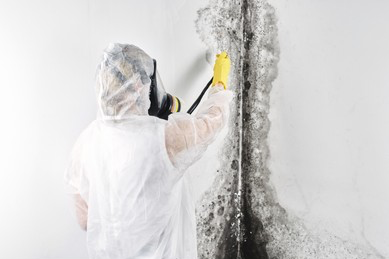Mold and mildew are common household nuisances that can affect both residential and commercial properties. While they may seem similar at first glance, understanding the differences between mold and mildew is essential for effective remediation and prevention. In this article, we’ll break down how to identify each, discuss their potential risks, and offer guidance on when to seek professional assistance.
Identifying Mold vs. Mildew
Both mold and mildew thrive in damp, warm environments, making bathrooms, basements, kitchens, and attics prime breeding grounds. However, they have distinct characteristics that set them apart.
- Mildew:
- Appears as a flat, powdery, or fluffy growth
- Typically white, gray, or yellow
- Commonly found on damp surfaces, such as shower walls, windowsills, and fabrics
- Can be easily wiped away with household cleaners
- Mold:
- Has a fuzzy, slimy, or irregular texture
- Can be black, green, blue, or even orange
- Often grows deeper into surfaces, including drywall, wood, and insulation
- Difficult to remove and requires professional remediation
Health Risks and Structural Concerns
While both mold and mildew can cause property damage and health concerns, mold is generally more hazardous.
- Mildew Risks:
- Can cause minor respiratory irritation in sensitive individuals
- May trigger allergic reactions such as sneezing, coughing, and eye irritation
- Aesthetic damage to fabrics, walls, and grout
- Mold Risks:
- Can lead to more severe respiratory issues, especially for those with asthma or weakened immune systems
- Produces mycotoxins, which can be harmful with prolonged exposure
- Causes structural damage by breaking down organic materials like wood and drywall
When to Seek Professional Remediation
While small mildew patches can usually be managed with household cleaners and proper ventilation, mold infestations require a more thorough approach.
- Professional Remediation is Necessary When:
- Mold covers a large area or has penetrated porous surfaces
- There is persistent moisture or water damage
- You notice a strong, musty odor but cannot locate the mold
- Individuals in the home or business experience unexplained respiratory issues
Preventing Mold and Mildew Growth
Prevention is key to avoiding costly damage and health risks associated with mold and mildew. Here are some tips to keep your home or business mold-free:
- Keep humidity levels below 50% with dehumidifiers or air conditioners
- Ensure proper ventilation in bathrooms, kitchens, and basements
- Fix leaks and dry water-damaged areas within 24-48 hours
- Clean and dry surfaces prone to moisture, such as tiles, grout, and window sills.
Conclusion
Mold and mildew may share similarities, but their differences in appearance, risk level, and remediation needs make it important to identify them correctly. Mildew can often be cleaned with household products, while mold requires professional intervention to prevent health and structural hazards. By maintaining a dry and well-ventilated environment, you can protect your home or business from these unwelcome intruders.
Give Mold Experts USA a call to get more information!
Links:


